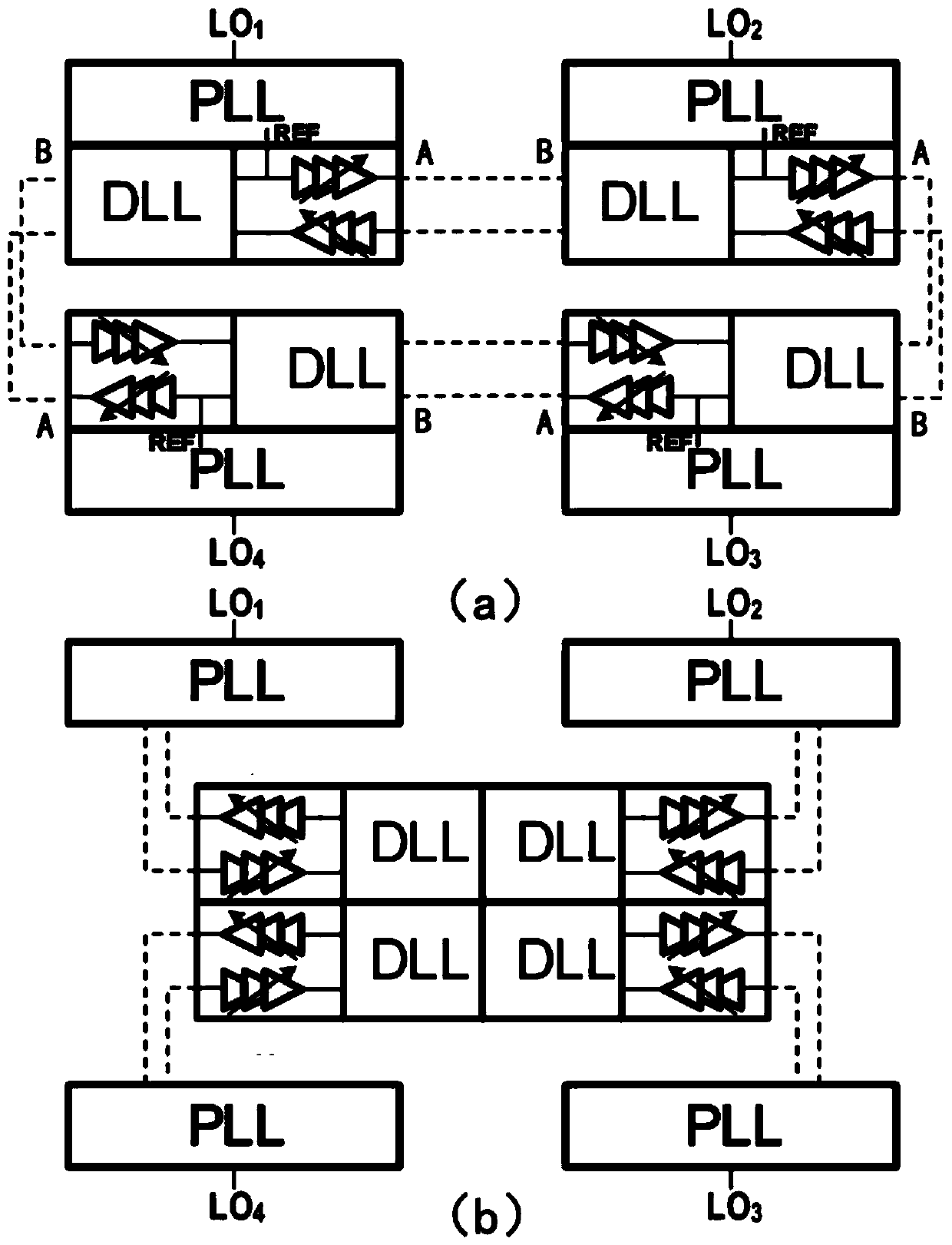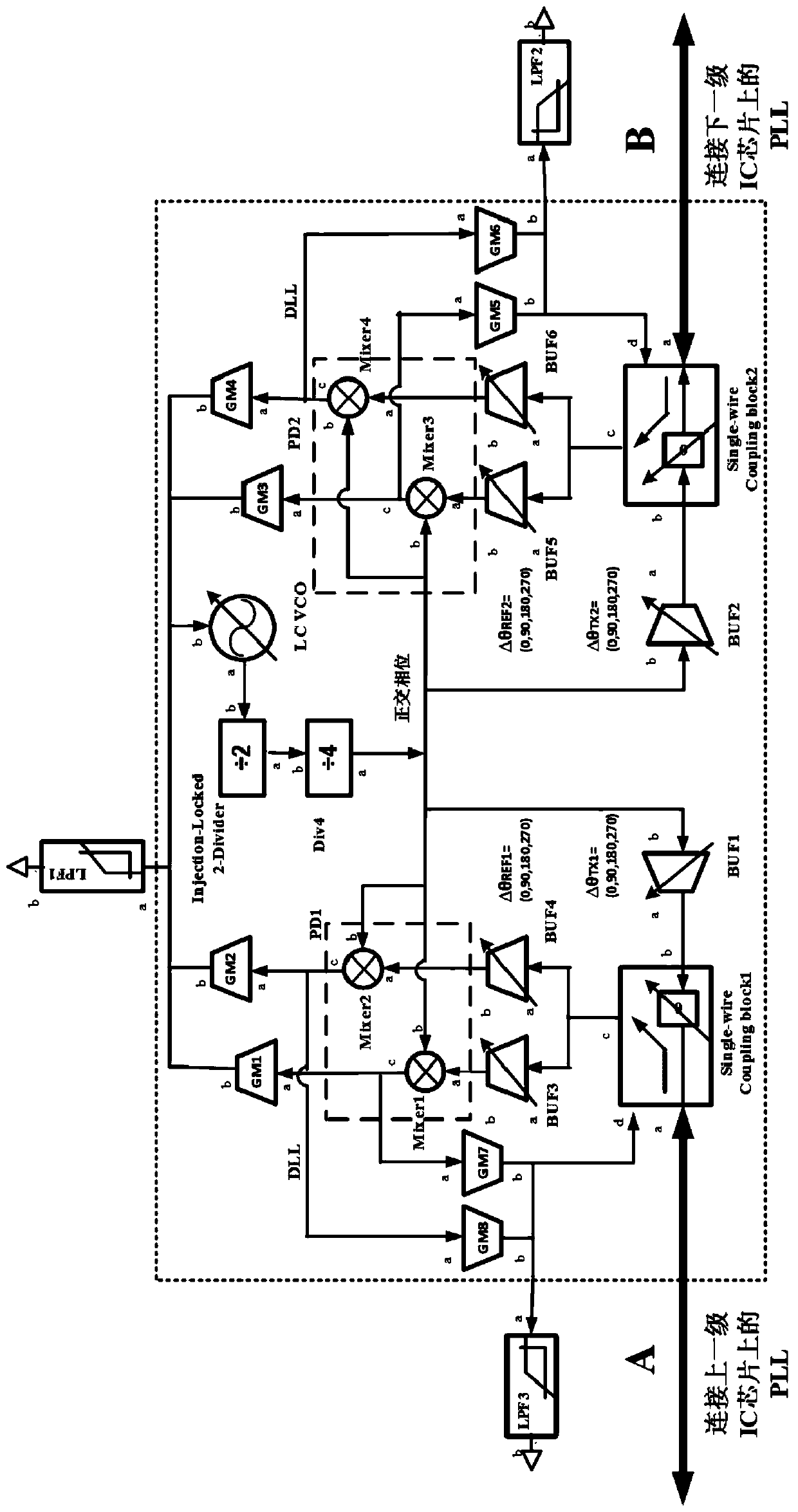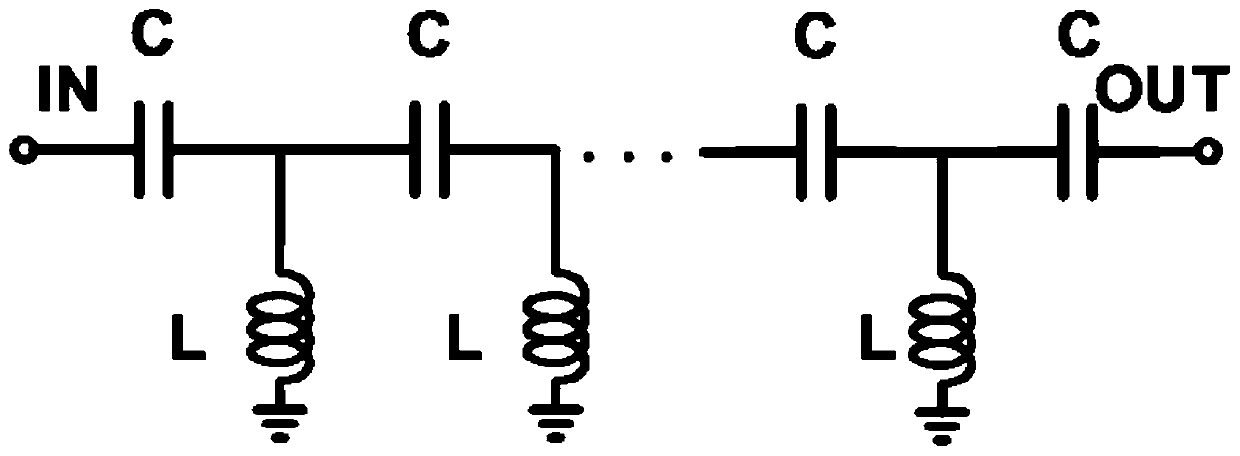An On-Chip Synchronous Self-Repair System Based on Low Frequency Reference Signal
A reference signal and self-repairing technology, which is applied in the field of radar phased arrays, can solve problems such as synchronization failure, and achieve the effects of strong self-adaptation, low loss, and small area
- Summary
- Abstract
- Description
- Claims
- Application Information
AI Technical Summary
Problems solved by technology
Method used
Image
Examples
Embodiment Construction
[0023] The present invention will be described in detail below according to the accompanying drawings and preferred embodiments, and the purpose and effect of the present invention will become clearer. The present invention will be further described in detail below in conjunction with the accompanying drawings and embodiments. It should be understood that the specific embodiments described here are only used to explain the present invention, not to limit the present invention.
[0024] An on-chip synchronous self-repair system based on a low-frequency reference signal, the system adopts a dual-input PLL star coupling structure or a dual-input PLL butterfly coupling structure, and the PLLs are single-line coupled, and the dual-input PLL star coupling The structure connects n dual-input PLLs through chain closure, and transmits a quarter of the local oscillator signals to each other for interlocking to realize the synchronization of local oscillator signals on-chip; the double-in...
PUM
 Login to view more
Login to view more Abstract
Description
Claims
Application Information
 Login to view more
Login to view more - R&D Engineer
- R&D Manager
- IP Professional
- Industry Leading Data Capabilities
- Powerful AI technology
- Patent DNA Extraction
Browse by: Latest US Patents, China's latest patents, Technical Efficacy Thesaurus, Application Domain, Technology Topic.
© 2024 PatSnap. All rights reserved.Legal|Privacy policy|Modern Slavery Act Transparency Statement|Sitemap



